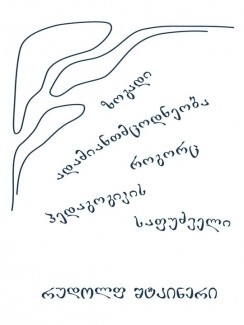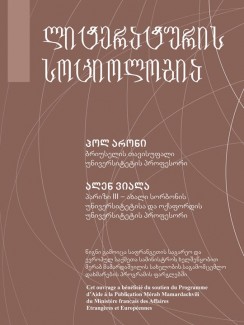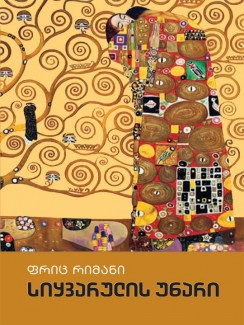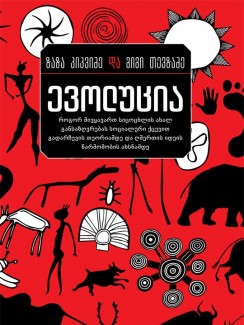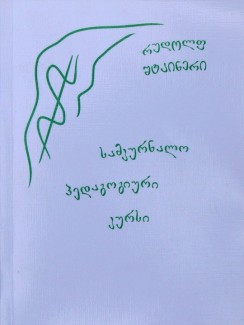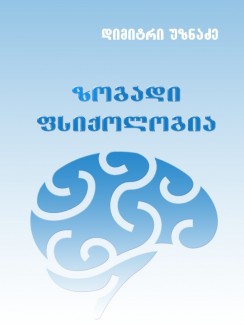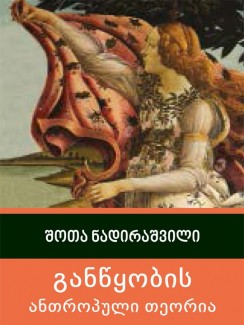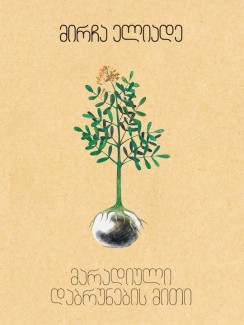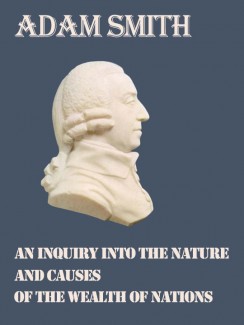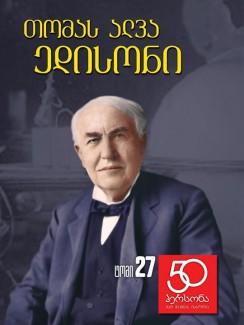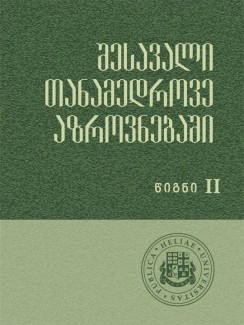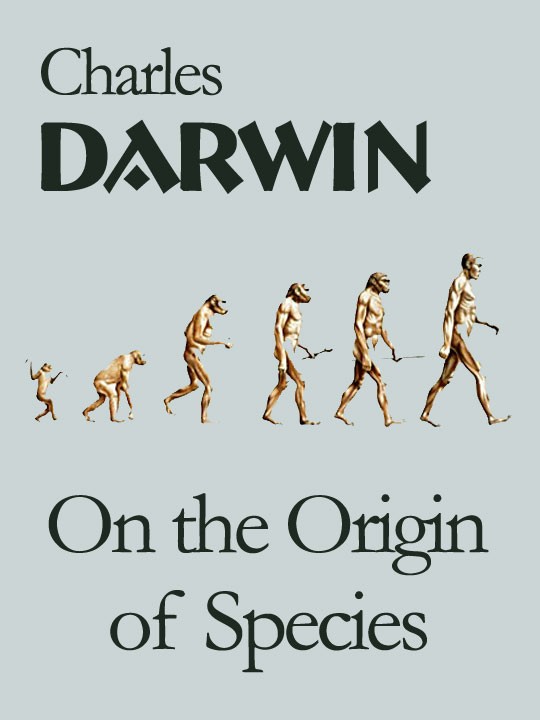
Charles Darwin`s On the Origin of Species, in which he writes of his theories of evolution by natural selection, is one of the most important works of scientific study ever published.
- ყდა
- თავფურცელი
- An Historical Sketch Of The Progress Of Opinion On The Origin Of Species, Previously To The Publication Of The First Edition Of This Work
- Introduction
- Chapter 1 Variation Under Domestication
- 1. Causes of Variability
- 2. Effects Of Habit And Of The Use Or Disuse Of Parts; Correlated Variation; Inheritance
- 3. Character Of Domestic Varieties; Difficulty Of Distinguishing Between Varieties And Species; Origin Of Domestic Varieties From One Or More Species
- 4. Breeds Of The Domestic Pigeon, Their Differences And Origin
- 5. Principles Of Selection Anciently Followed, And Their Effects
- 6. Unconscious Selection
- 7. Circumstances Favourable To Man's Power Of Selection
- Chapter 2 Variation Under Nature
- 1.
- 2. Individual Differences
- 3. Doubtful Species
- 4. Wide-Ranging, Much Diffused, And Common Species Vary Most
- 5. Species Of The Larger Genera In Each Country Vary More Frequently Than The Species Of The Smaller Genera
- 6. Many Of The Species Included Within The Larger Genera Resemble Varieties In Being Very Closely, But Unequally, Related To Each Other, And In Having Restricted Ranges
- 7. Summary
- Chapter 3 Struggle For Existence
- 1.
- 2. The Term, Struggle For Existence, Used In A Large Sense
- 3. Geometrical Ratio Of Increase
- 4. Nature Of The Checks To Increase
- 5. Complex Relations Of All Animals And Plants To Each Other In The Struggle For Existence
- 6. Struggle For Life Most Severe Between Individuals And Varieties Of The Same Species
- Chapter 4 Natural Selection; Or The Survival Of The Fittest
- 1.
- 2. Sexual Selection
- 3. Illustrations Of The Action Of Natural Selection, Or The Survival Of The Fittest
- 4. On The Intercrossing Of Individuals
- 5. Circumstances Favourable For The Production Of New Forms Through Natural Selection
- 6. Extinction Caused By Natural Selection
- 7. Divergence Of Character
- 8. The Probable Effects Of The Action Of Natural Selection Through Divergence Of Character And Extinction, On The Descendants Of A Common Ancestor
- 9. On The Degree To Which Organisation Tends To Advance
- 10. Convergence Of Character
- 11. Summary Of Chapter
- Chapter 5 Laws Of Variation
- 1.
- 2. Effects Of The Increased Use And Disuse Of Parts, As Controlled By Natural Selection
- 3. Acclimatisation
- 4. Correlated Variation
- 5. Compensation And Economy Of Growth
- 6. Multiple, Rudimentary, And Lowly-Organised Structures Are Variable
- 7. A Part Developed In Any Species In An Extraordinary Degree Or Manner, In Comparison With The Same Part In Allied Species, Tends To Be Highly Variable
- 8. Specific Characters More Variable Than Generic Characters
- 9. Secondary Sexual Characters Variable
- 10. Distinct Species Present Analogous Variations, So That A Variety Of One Species Often Assumes A Character Proper To An Allied Species, Or Reverts To Some Of The Characters Of An Early Progenitor
- 11. Summary
- Chapter 6 Difficulties Of The Theory
- 1.
- 2. On The Absence Or Rarity Of Transitional Varieties
- 3. On The Origin And Transition Of Organic Beings With Peculiar Habits And Structure
- 4. Organs Of Extreme Perfection And Complication
- 5. Modes Of Transition
- 6. Special Difficulties Of The Theory Of Natural Selection
- 7. Organs Of Little Apparent Importance, As Affected By Natural Selection
- 8. Utilitarian Doctrine, How Far True: Beauty, How Acquired
- 9. Summary: The Law Of Unity Of Type And Of The Conditions Of Existence Embraced By The Theory Of Natural Selection
- Chapter 7 Miscellaneous Objections To The Theory Of Natural Selection
- Chapter 8 Instinct
- 1.
- 2. Inherited Changes Of Habit Or Instinct In Domesticated Animals
- 3. Special Instincts
- 4. Instincts Of The Cuckoo
- 5. Slave-Making Instinct
- 6. Cell-Making Instinct Of The Hive-Bee
- 7. Objections To The Theory Of Natural Selection As Applied To Instincts: Neuter And Sterile Insects
- 8. Summary
- Chapter 9 Hybridism
- 1.
- 2. Degrees Of Sterility
- 3. Laws Governing The Sterility Of First Crosses And Of Hybrids
- 4. Origin And Causes Of The Sterility Of First Crosses And Of Hybrids
- 5. Reciprocal Dimorphism And Trimorphism
- 6. Fertility Of Varieties When Crossed, And Of Their Mongrel Offspring, Not Universal
- 7. Hybrids And Mongrels Compared, Independently Of Their Fertility
- 8. Summary Of Chapter
- Chapter 10 On The Imperfection Of The Geological Record
- 1.
- 2. On The Lapse Of Time, As Inferred From The Rate Of Deposition And Extent Of Denudation
- 3. On The Poorness Of Palaeontological Collections
- 4. On The Absence Of Numerous Intermediate Varieties In Any Single Formation
- 5. On The Sudden Appearance Of Whole Groups Of Allied Species
- 6. On The Sudden Appearance Of Groups Of Allied Species In The Lowest Known Fossiliferous Strata
- Chapter 11 On The Geological Succession Of Organic Beings
- 1.
- 2. On Extinction
- 3. On The Forms Of Life Changing Almost Simultaneously Throughout The World
- 4. On The Affinities Of Extinct Species To Each Other, And To Living Forms
- 5. On The State Of Development Of Ancient Compared With Living Forms
- 6. On The Succession Of The Same Types Within The Same Areas, During The Later Tertiary Periods
- 7. Summary Of The Preceding And Present Chapters
- Chapter 12 Geographical Distribution
- 1.
- 2. Single Centres Of Supposed Creation
- 3. Means Of Dispersal
- 4. Dispersal During The Glacial Period
- 5. Alternate Glacial Periods In The North And South
- Chapter 13 Geographical Distribution--continued
- 1. Fresh-Water Productions
- 2. On The Inhabitants Of Oceanic Islands
- 3. Absence Of Batrachians And Terrestrial Mammals On Oceanic Islands
- 4. On The Relations Of The Inhabitants Of Islands To Those Of The Nearest Mainland
- 5. Summary Of The Last And Present Chapters
- Chapter 14 Mutual Affinities Of Organic Beings: Morphology -- Embryology -- Rudimentary Organs
- 1. Classification
- 2. Analogical Resemblances
- 3. On The Nature Of The Affinities Connecting Organic Beings
- 4. Morphology
- 5. Development And Embryology
- 6. Rudimentary, Atrophied, And Aborted Organs
- 7. Summary
- Chapter 15 Recapitulation And Conclusion
- Glossary Of The Principal Scientific Terms Used In The Present Volume







